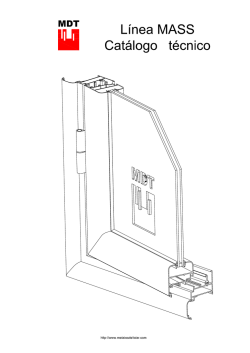
Questionnaire (17-18 year old child) to be filled in by child
Questionnaire (17-18 year old child) to be filled in by child Domain Salut respiratoria y asma Problemas en la nariz y ojos Problemas de piel 12 MEDALL questionnaire 13-16 MEDALL questionnaire Remarks References Idem 14y "Asma" excepto preguntas opcionales 17 Idem 14y "Rinitis alérgica" excepto preguntas 5 i 7-14 i preguntas opcionales Idem 14y "Eczema" excepto preguntas opcionales 17-18 MEDALL questionnaire Similar 14y "Nutrición" 19-27 Situación familiar, tabaco Similar 14y "Preguntas sociodemográficas" padres/otros, animales casa confounding variables for neuro/growth/resp/others 28 Intenso/moderado/suave Similar 14y "Actividad física" Televisión 29 30-31 Deporte, competición tiempo, TV en habitación Similar Generation R, ACBD, HERMES Estudios y trabajo 32-36 Estudios, notas, trabajo i) association with cognitive and behaviour outcomes; ii) association with growth; iii) confounding variables for neuro/growth/resp/others i) association with cognitive and behaviour outcomes; ii) association with growth; iii) confounding variables for neuro/growth/resp/others confounding variables for neuro/growth/resp/others Reacciones alérgicas a alimentos Características del hogar y familiares Actividad física y derportes Uso de teléfono móvil y otras tecnologías Consumo de tabaco Number Measure 1-11 MEDALL questionnaire David Donaire ([email protected]) One question on studies similar 14y "Preguntas sociodemográficas" pregunta 7; similar ALSPAC; notas similar 14y hoja visita 37-40, 44- REMBRANDT questionnaire idem ABCD, HERMES, DNBC, INMA, Generation R; 55 (phone, tablet, other some questions similar 14y "Telefonía" devices) 41-43 MOBI-KIDS questionnaire similar HERMES (laterality, bluetooth, handsfree) 56 Short version of the Mobile idem HERMES; Spanish adaptation of the Phone Problem Use Scale questionnaire for adolescents (MPPUS) for Adolescents 57 Cuestionario ESTUDES 2012 Similar 14y "Consumo de tabaco" Potential publications and use of the data outcome variable Others outcome variable outcome variable outcome variable to define RF exposure and will be used for the association with the following outcomes: i) congitive function; ii) behaviour problems; iii) sleeping problems; iv) non-specific symptoms (GERoNiMO/REMBRANDT) to define RF exposure and will be used for the association with the following outcomes: i) congitive function; ii) behaviour problems; iii) sleeping problems; iv) non-specific symptoms (GERoNiMO/REMBRANDT) i) López-Fernández O, Honrubia-Serrano ML, Freixa-Blanxart M. [Spanish association with the following outcomes: i) congitive function; ii) adaptation of the "Mobile Phone Problem Use Scale" for adolescent behaviour problems; iii) sleeping problems; iv) non-specific population]. Adicciones.2012;24(2):123-30; ii) paper HERMES of validation symptoms (GERoNiMO/REMBRANDT) short version (under review) i) association with cognitive and behaviour outcomes; ii) association with growth; iii) association with resp; iv) confounding variables for neuro/growth/resp/others i) association with cognitive and behaviour outcomes; ii) association with growth; iii) association with resp; iv) confounding variables for neuro/growth/resp/others i) association with cognitive and behaviour outcomes; ii) association with growth; iii) association with resp; iv) confounding variables for neuro/growth/resp/others i) PSQI: Buysse DJ, Reynolds CF 3rd, Monk TH, Berman SR, Kupfer DJ. The i) outcome variable (GERoNiMO/REMRBANDT, others?); ii) permission asked Pittsburgh Sleep Quality Index: a new instrument for psychiatric practice confounding/mediator variable for neuro/growth/resp/others PSQI and research. Psychiatry Res. 1989;28(2):193-213; ii) MCTQ: Roenneberg T, Wirz-Justice A, Merrow M. Life between clocks: daily temporal patterns of human chronotypes. J Biol Rhythms. 2003;18(1):80-90 Consumo de 58 bebidas alcohólicas Cuestionario ESTUDES 2012 Similar 14y "Alcohol" Otro tipo de drogas 59-60 Cuestionario ESTUDES 2012 Similar 14y "Drogas" Calidad del sueño 61-69 Pittsburgh sleep quality index (preg. 1-9) + MCTQ (selected questions) PSQI is an adult questionnaire Cronotipo 71 72 Sleep & tech MCTQ Idem ABCD Idem MCC-Spain questionnaire association with sleeping problems (GERoNiMO/REMBRANDT) Roenneberg T, Wirz-Justice A, Merrow M. Life between clocks: daily i) outcome variable; ii) confounding/mediator variable for temporal patterns of human chronotypes. J Biol Rhythms. 2003;18(1):80-90 neuro/growth/resp/others Dolor de cabeza 73 HIT-6 idem HERMES Kosinski M, Bayliss MS, Bjorner JB, Ware JE Jr, Garber WH, Batenhorst A, Cady R, Dahlöf CG, Dowson A, Tepper S. A six-item short-form survey for measuring headache impact: the HIT-6. Qual Life Res. 2003;12(8):963-74 i) outcome variable (GERoNiMO/REMRBANDT, others?); ii) confounding/mediator variable for neuro/others? permission asked Consumo de 74 refrescos y otras bebidas Estado de salud 75-79 general y bienestar Sweet beverages Idem FFQ pregnancy INMA and 4y INMA-Sab Kidscreen-27 idem HERMES Comportamiento y 80 emociones SÓLO CHICAS 81-85 Crecimiento y desarrollo SDQ idem 14y and ABCD, HERMES, DNBC, INMA Menstrual cycle, bleeding, age menarche, contraceptives Idem ALSPAC, similar 14y "Desarrollo puberal" pregunta 5 confounding variable for growth Ravens-Sieberer U, Gosch A, Rajmil L, Erhart M, Bruil J, Duer W, Auquier P, i) outcome variable (GERoNiMO/REMRBANDT, others?); ii) Power M, Abel T, Czemy L, Mazur J, Czimbalmos A, Tountas Y, Hagquist C, confounding/mediator variable for neuro/growth/resp/others Kilroe J, Kidscreen Group E. KIDSCREEN-52 quality-of-life measure for children and adolescents. Expert Rev Pharmacoecon Outcomes Res. 2005;5(3):353-64 Goodman R. The Strengths and Difficulties Questionnaire: a research note. outcome variable (GERoNiMO/REMRBANDT, others?) J Child Psychol Psychiatry. 1997;38(5):581-6 outcome variable permission asked References Adapted from: Perren S, Alsaker FD. Social behavior and peer relationships of victims, bully-victims, and bullies in kindergarten. J Child Psychol Psychiatry. 2006;47(1):45-57 Olweus, D. (1996). The revised Olweus bully/victim questionnaire. Bergen, Norway: Research Center for Health Promotion (HEMIL Center), University of Bergen Solberg, M. E., & Olweus, D. (2003). Prevalence estimation of school bullying with the Olweus Bully Victim Questionnaire. Aggressive Behavior, 29, 239-268 Others Preguntas elimidadas: Domain Bullying Number Measure Gen R questionnaire + cyberbuylling / victimization question Remarks Suggested by Marina Verlinen (Generation R), same questions than Generation R mother 7.5y We give a definition of bullying, which clearly shows that it is systematic and that the power is unevenly distributed (Olweus, 1996) Five answer options from Olweus (Solberg & Olweus, 2003) Potential publications Strengths: longitudinal measurements of predictors Limitations: small sample size, already a lot of literature, not measures of bullying in previous years, not expertise here Potential publications: - longitudinal behavior/cognition/family structure & psychopathology as predictors of bullying (less victimization) 18y - bullying (mainly victimization) 18y predictors of later outcomes/MRI
© Copyright 2026
